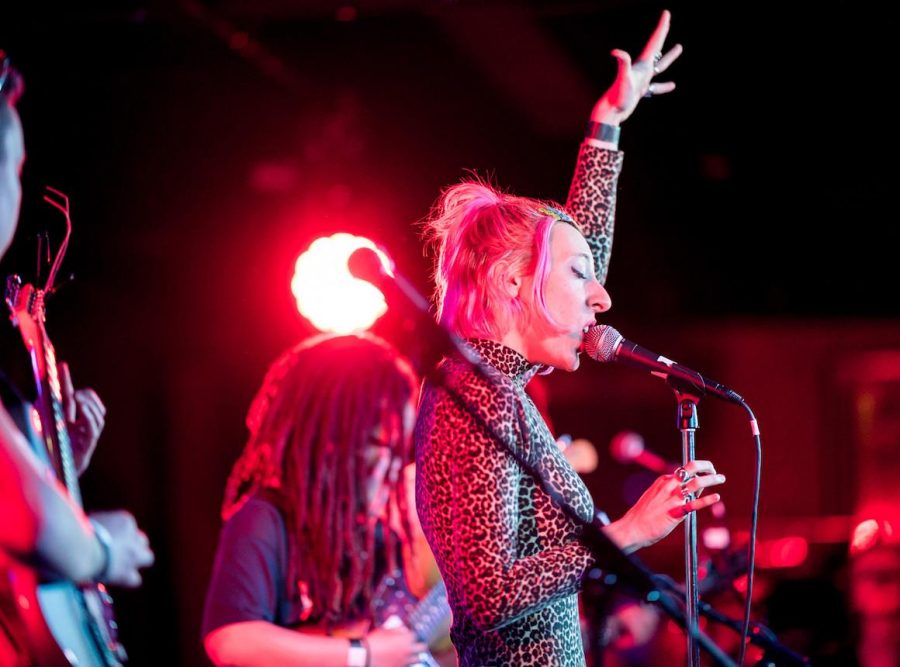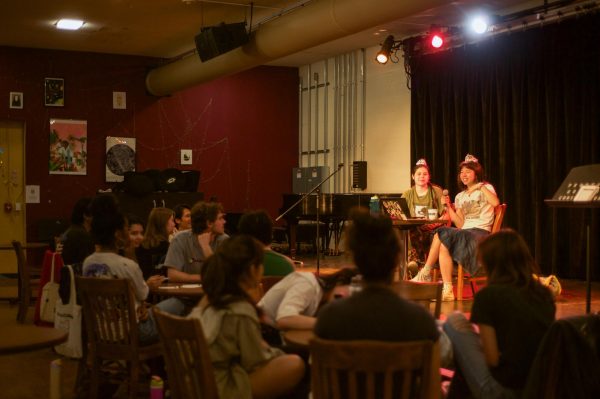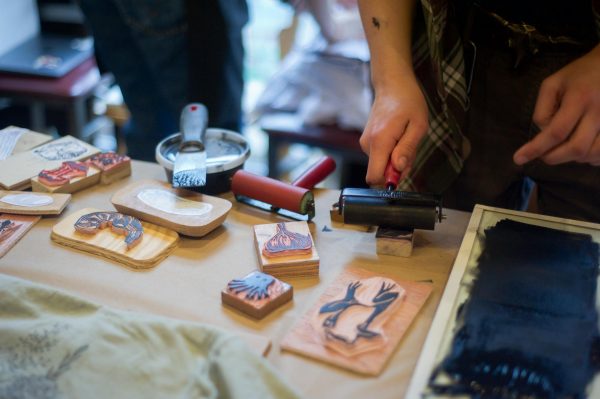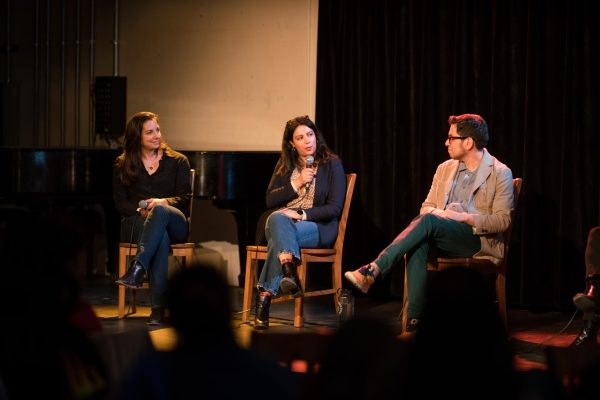Students Disappointed in ’Sco Amid COVID-19 Changes
Prior to the pandemic, the ’Sco hosted artists regularly, such as the band Leggy + T-Rextasy, pictured above.
As COVID-19 rates declined on campus in June, a sacred Oberlin tradition was restored: Wednesday night Splitchers at the ’Sco. While the venue is still a beloved staple of College culture, some feel that the event just isn’t the same. Some students believe that ObieSafe policies, which currently prohibit drink service, require all ’Sco attendees to be masked, and limit capacity to 200-people have affected attendance.
For College fourth-year Noah Auby, these rules have dramatically shifted the ’Sco’s atmosphere. On the first Wednesday of the semester, he noticed that the ’Sco was less crowded than usual and guests seemed hesitant to dance. Auby was disappointed at the altered setup of Splitchers, which he attributes to the COVID-19 policies. After attending the first Splitchers of the semester, he decided not to go back.
“I have not been [to Splitchers] more than once this semester — and for good reason,” he said. “With masks and other restrictions, the people are just kind of awkward.”
Auby is not the only student who feels disheartened by the loss of “normal” Splitchers. Kaylyn Ready, College third-year and one of the managers at the ’Sco, addressed this concern.
“We’re really just trying to keep everybody safe in multiple ways, like making sure that people aren’t drinking too much, and monitoring the crowd, and making sure whatever’s going on is keeping people safe,” she said.
The ’Sco’s management team meets regularly to discuss these policies as it tries to navigate the balance between safety and fun. Given the current circumstances, that means temporarily ceasing drink service.
“We don’t want people just getting a drink and chugging it and leaving their masks down,” Ready said. “Also, drunk people tend to forget to put their masks on.”
Most students understand why the policies exist. However, that does not change the dampened feeling of being at Splitchers, and the student body feels frustrated. College fourth-year Zach Bayfield used to attend Splitchers for a mid-week mental recharge. This year, he feels like Splitchers cannot serve that same purpose. Restrictions, although necessary, make the event less relaxing.
“There’s no denying that they’re doing the right thing, but at the same time, it makes it unlikely for people to come to the ’Sco at the same rate they did before,” Bayfield said.
These policies are particularly difficult to accept after this summer, when the indoor mask mandate was lifted entirely and students on campus got a taste of normal Splitchers. In the face of these fresh memories, Obies are finding it difficult to re-adjust. College second-year Ian Watson was a self-described “semi-regular” at summer semester Splitchers. As Watson walked into the first Splitchers this fall, he felt the difference immediately.
“It just kind of felt a little stifled, and it was just a little weirder,” he said.
That sentiment is exactly what Bayfield was expecting from fall semester Splitchers. Last week, Bayfield decided he wouldn’t even check out the scene. Instead, he opted for a Wednesday night out at The Feve.
Wednesday is Long Island Night at The Feve, where a Long Island iced tea is just $6. Dinner and drinks at the local bar has long been a pre-Splitchers tradition, but recently it has become the only Wednesday destination. Currently, The Feve — without a capacity lim- it or masking requirement — has much more relaxed COVID-19 policies than the College, so some third- and fourth- years choose to spend their Wednesdays at the bar.
“I think the energy is much better and the atmosphere is great,” Bayfield said about his experience at Long Island Night last week. “It just feels like a much more natural social environment.”
According to Bayfield, the ’Sco is having some difficulty curating its signature fun, carefree environment. He’s not surprised that students have begun to favor The Feve.
“It’s a bit inevitable in a sense. The ’Sco is going into this situation having everyone wear a mask, have the capacity be at 200, and not let people share drinks. You can do all those things at a bar that is a five-minute walk from campus,” he said.
Ready acknowledges The Feve as competition but also pointed out that the two events are not mutually exclusive — people can filter in and out of both.
“If you are done with Long Is- land Night, come to the ’Sco, or if you don’t want to go to Long Island Night, go to the ’Sco,” she said. “It’s just like a fun alternative; people are just having fun for the night.”
As Halloween approaches, Ready isn’t worried about the ’Sco’s attendance. She hopes that this year’s Halloween Splitchers can bring back some of the lost energy. On Oct. 19, the ’Sco announced it would raise its capacity to 300 people for the night, so more people can join in on festivities and fill the dance floor.
“It’s so much fun to be with people on Halloween; they’re all dressed up, and dancing with people is one of the best times,” Ready said. “And I really, really hope we can serve [alcohol] for Halloween.”
It’s unclear how things will unfold at the ’Sco throughout the rest of the year. Halloween is normally the biggest night of the year at the ’Sco, and it may be a test of whether a COVID-19 Splitchers can live up to its past reputation.









